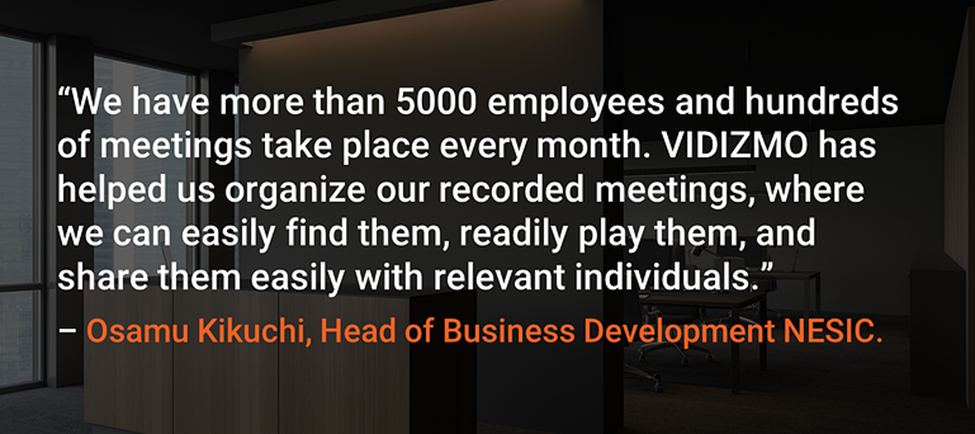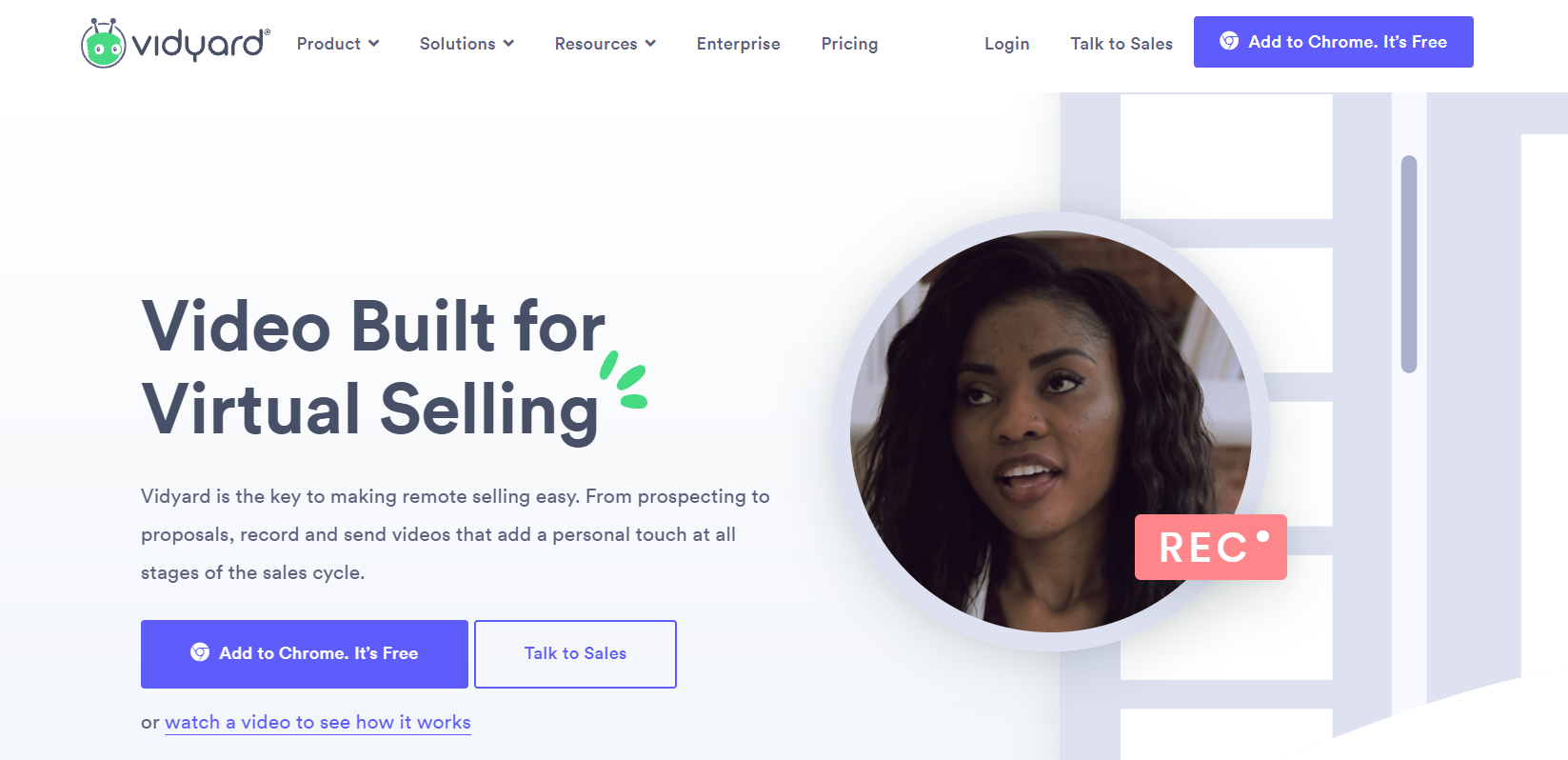Video use cases are endless. Monetize them. Use them for marketing your product. Communicate internally. Collaborate globally. Record and share organizational knowledge. Make your training content engaging.
Yes, you can do it all, but not without a video hosting site.
But there are tons of video hosting sites in the market – both free and paid. Which one should you go for? What is the best option for your video use cases? We will discuss it all in this article.
TL;DR
There are both free and paid options – each with its own pros and cons. The ones you already know about might not be as secure. Or only focused on external streaming.
9 best video hosting sites in 2022:
Click below and jump directly to where we discuss their main capabilities
- VIDIZMO (our pick for end-to-end business use cases)
- Brightcove
- Wistia
- Vidyard
- Panopto
- YouTube (our pick for content creators)
- Vimeo
- Dailymotion
Let us now understand what exactly is video hosting.
As a bonus, at the end of this blog, we will also share the reason why you must never self-host videos and why you should opt for a 3rd party video hosting site rather than going through the hassle of creating one from scratch.
What is Video Hosting?
Video hosting can be defined in simple terms as:
“Video hosting is a modern approach to uploading video content on a server (own or 3rd party) for your viewers to access over the internet.”
You can take the difficult route of creating your own video hosting site. Or you can simply opt for a suitable 3rd party video hosting site that best fits your needs.
Your viewers can then access the video from:
- the video hosting website directly
- a shared video link (make sure it is secure so that there are no leakages)
- your website (you can embed the video on your site)
5 Best Paid Video Hosting Sites
-
VIDIZMO
Here is a YouTube-like video hosting site designed for end-to-end corporate use cases with:
- Support for both live and on-demand video streaming
- External and private video streaming capabilities
- Gartner-recognized video content management capabilities
- A broad range of integrations and AI capabilities
- Enterprise-grade security and wide compliance coverage
- Access management and limited sharing capabilities
- Deployable in Azure, AWS, any other cloud, on-premise, hybrid model, or as a SaaS application

Best For organizations seeking to maintain a centralized YouTube-like secure and compliant video library with all their internal and external videos in one place, organized and indexed for quick and accurate search when the need arises.

Learn How VIDIZMO Helps NESIC (NEC) Uses Videos to Boost Employee Productivity Read More on This Story
Main Features
- Provides a ready-made YouTube-like secure video hosting platform with an easy-to-use user interface
- Automatically transcoded and adaptively streamed using modern video streaming protocols like HLS and MPED-DASH to ensure compatibility with all devices, browsers, and bandwidth conditions
- There is no upload limit for the video duration, and video storage is incredibly scalable due to various cloud storage options
- A white-label VOD platform with custom branding features to help you bring your own flair to the site while following your branding guidelines
- Create multiple autonomous video portals for different audiences or departments, each with its own unique branding, custom security policies, different admin controls, and separate billing
- SEO-friendly embedding is possible on external sites, as well as SSO-enabled embedding for internal sites
- Advanced content security capabilities, including SSO integration, end-to-end content encryption, IP restriction, role-based access controls, etc.
- Stream videos accessible to the public or restricted for internal viewers – you can even restrict a video to specific users or groups
- Create multiple expirable links for limited sharing – share videos with internal or external viewers for a limited time and limited number of views with password protections
- Advanced video analytics dashboards viewable with quality of experience reports
- An interactive video platform – you can add in-video interactive elements like polls, quizzes and handouts to make passive listeners active viewers
- Host data in data centers of your choice meeting your compliance requirements
- Flexible deployment options with tons of customer support options – not just chat support
- Meet all major security compliances such as GDPR, HIPAA, FISC and many more
- The platform caters to both internal and external audiences.
- Private video hosting is VIDIZMO's forte – like streaming onboarding videos to a limited group with limited sharing
- Rich video sharing options – share to the entire world on social media platforms, to certain groups, via a link, to an external and internal audience and others
- It offers only simple video creation tools like capturing video through your phone camera.
Read More | 6 ways to share your videos
-
Brightcove
Brightcove is another premium video hosting site; mostly designed to cater to external audiences only. There is little to no focus on private video streaming use cases like internal comms, onboarding, training, etc.

Best For streaming live and on-demand video content to external audiences for OTT, entertainment, marketing, etc. Based on its target market, it provides many public video streaming features like monetization, marketing-focused integrations, video embedding, social sharing, etc.
Main Features
- Live and on-demand video streaming, mainly for an external audience
- Offers OTT-focused features
- Monetization and advertising is possible in the custom plan through plug-ins
- Mobile optimized with security features such as IP restriction and Single Sign-On
- A variety of pre-defined branding features where you can change portal colors, add a logo, etc.
- Closed captions and audio description support
- Analytics for media consumption such as number of downloads or play rate
- The user interface is designed to be navigated by tech-savvy users – according to the reviews on TrustRadius, Brightcove seems to have a hard-to-navigate Interface
- No artificial intelligence capabilities available except for automatic transcription
- Lack of AI entails that this platform's search is basic – not as refined with no in-video search options
- No integrations with video conferencing tools such as Zoom or MS Team to automatically ingest your meeting recordings
- Other internal comms and training integrations LMS are also missing
- Cannot restrict a video to certain specific users or groups
- Can only be deployed in the cloud – no on-premise video streaming options
- A limited selection of modern video formats supported
- Interactivity features include in-video quizzes, branching and clickable CTAs
Here is all about Brightcove alternatives
-
Wistia
Third, in the list for premium options is Wistia. A digital marketing solution rather than just a simple video hosting site. Sure, you can upload videos and embed them on your site with a branded video player; however, the bandwidth is limited to 200 GB and storage at 25 videos.

Best For organizations looking for a basic ad-free video hosting site for external video marketing use cases.
Main Features
- Paid plans get an unbranded video player
- Only on-demand video streaming – no live streaming capabilities
- Videos can be embedded on other sites
- Many social sharing options are available
- Can place clickable CTAs on videos
- Advanced analytics with heat mapping
- Interactivity features include email capture forms and more
- Mostly marketing-focused integrations are available with CRM, email marketing, analytics, etc.
- According to reviews, Wistia doesn't provide deeper SEO capabilities
- No AI capabilities
- No custom metadata to improve search
-
Vidyard
Here is another simple video platform designed specifically for marketing and sales use cases. It has a freemium platform where the free version can be used for simple video recording and sharing.

Best For organizations that require advanced video hosting site for marketing and sales enablement content. It only supports external video streaming.
Main Features
- Freemium model makes it budget-friendly for basic video use cases
- Caters well to marketing and sales use cases
- Basic video branding capabilities
- Not an OTT platform
- Not for content creators – cannot monetize content
- Great variety of marketing integrations
- No other integrations like LMS and Video conferencing platforms
- No in-video search and other AI-supported features
-
Panopto
Last on the premium list is Panopto, well-known in the world of online education. Panopto is designed to cater to educational video use cases and supports internal video streaming. The platform also has a freemium model with a free screen recording product. The rest of the features of the video hosting sites are only available in the paid version.

Best For organizations in the education industry as Panopto already caters to many universities, including Stanford University. The platform provides both live and on-demand video streaming for internal and external audiences.
Main Features
-
-
- You can upload and share large video files with a limited audience
- Live and on-demand video streaming is possible
- Private video streaming is provided - you can set restrict viewing, downloading, etc.
- Not recommended for external sharing and streaming use cases
- Designed for educational use cases
- Automatically transcribes your videos
- Integrates with internal tools like video capture, LMS, Video Conferencing platforms, etc.
- A variety of basic branding options like logo placement are available
- Host videos in the cloud in any data center of your choice
- It has basic branding features for the portal and the video player
- Doesn't offer rich AI features such as face/object detection to support search
-
Here is all about Panopto alternatives
4 Best Free Video Hosting Sites
Not sold on premium options and want to stick to the free ones? Here are our top picks for free video hosting sites.
Before that, we should understand the unseen cost of free video hosting sites.
Intangible Cost of Free Video Hosting Sites
As they say, "all that glitters is not gold," same is the case with these free video hosting options.
Yes, they do not have a monetary cost attached to them. But the price is paid by your viewers' attention and data. These sites continuously analyze viewer data to recommend them other content – these can include other competitors' content as well as some other inappropriate videos.
The viewer's experience is also continuously disrupted by ads popping up on the portal and player pages. The free options also lack critical security measures and provide the bare minimum in terms of private video streaming.
Suffice to say, these sites might do more harm than good in most cases.
However, if you are a content creator only looking to grow your audience and earn through your content, then these sites will be the perfect fit for you.
-
YouTube
YouTube is a popular video hosting site, known as a video sharing platform, that had >2.3 billion active users in 2020, and the number is only growing. It is a popular site for content creators due to its large audience that mostly visits it for entertainment or free learning content.

It has free unlimited cloud storage for your videos and supports both live and on-demand video streaming. However, the platform is only for external video streaming use cases. The best part is content creators can monetize their content and earn from YouTube's large pre-existing audience.
It's free, yes, and you can easily embed the videos using custom iframe codes. While you don't have to worry about the bandwidth and file size as they are unlimited, but videos should be shorter than 15 minutes unless you're a partner. Moreover, ads showing either at the start or overlay can be annoying!
The main downfall of YouTube is when the video is uploaded, the platform takes ownership and rights to redistribute your content. Everyone wants to have rights to their own content.
Furthermore, if you're a business, you don't want a branded iframe player with little to no enhanced capabilities.
Nevertheless, organizations can opt for YouTube to reach its large audience through targeted ads and branded video content.
-
Vimeo
Unlike YouTube, Vimeo is an OTT-focused video hosting site for professionals targeting external audiences. It was originally created for creative professionals like producers and filmmakers to get an audience for their published work.

Main Features
- Live and on-demand video streaming, mainly for external audiences (internal audience is catered in their paid custom enterprise platform, which is still basic in comparison to the paid options we recommended above)
- Offer customizable video embeds, and they are cross-device compatible
- No limitation on bandwidth, duration, and file size
- If you're a paying customer, you can further customize their embed settings
- Content creators can also create professional social media videos with Vimeo Create and advertise their creative services on the platform.
- Lacks many critical integrations of different IT systems such as LMS, CMS or CRM
- Doesn't have AI features such as smart search
- Simple analytics for video metrics such as play rate
Read more about Vimeo alternatives
-
Dailymotion
Dailymotion is another free video-sharing platform like YouTube offering both free and paid accounts and partner programs. There are around 250 million monthly unique viewers, mostly entertainment-seekers.

Main Features
- Offers increased exposure and ad revenue to content creators
- Free unlimited video hosting with options
- Make videos private and even password-protected.
- Bandwidth and storage are unlimited.
- You can't download videos without a third-party service.
- It allows videos up to 2GB, and videos can't be longer than 60 minutes.
- Videos are not ad-free compared to Vimeo, VIDIZMO, Brightcove, and Panopto.
- Video analytics are limited as compared to premium options.
-
Facebook
With 2.74 billion monthly active users, Facebook is the biggest social media platform. It supports most content types – videos being one of them.

As videos drive the most engagement and conversion, the new Facebook algorithm prefers video posts a lot. They are sticky – bringing in repeat views.
The platform does not put an upload limit for viewing and these videos can be embedded onto your website. You can also share them on other social media platforms.
Increase your audience by making these videos available on Facebook Watch. The platform is a great new avenue for content creators.
However, it is still critical to remember that Facebook is not a video-first platform – it is not designed with video hosting capabilities in mind.
The ads also disrupt the viewing experience - many are not even skippable.
Why You Must Never Self-Host Videos on Your Site?
Imagine this scenario: You are a brand marketing manager producing just 10 to 20 branded video content a month. These include short video ads as well as long-form content like live events and recording interviews.
You can host videos on your website yourself. But here are all the problems you will come upon:
- The video will take up a lot of server bandwidth – the larger the video duration or quality, the more bandwidth it will take up. A single video can exceed your bandwidth plan when cached on the website server bringing your site to a screeching halt.
- Limited bandwidth will also entail that your video will take much longer to load, with viewers constantly facing buffering.

- Large videos also take up more storage space which is why web hosting providers restrict the upload file size. Hence, you won't be able to host large videos on your site.
- Your videos will not be compatible with playback on different devices like mobile phones and different browsers like Firefox. Here is a guide on all the various video formats for the web.
- Your team and viewers will not be able to share these ahead to any other platform.
- If you need to restrict certain videos to a limited audience, uploading them on your site just won't do – hence you are bound to need a separate platform for private video streaming like confidential training and meeting recordings.
- There are countless other video security and management options you will be losing out on when you opt for self-hosting videos on your site.
On the other hand, video files uploaded and stored in a video hosting platform work differently. You can embed video directly from the platform onto your site, with a variety of social sharing options.
A 3rd party video hosting platform will let you create multiple renditions. Your video content will then be playable on different devices, browsers, and bandwidth conditions (that is, if you do your research and choose an effective video hosting site).
The hosting, storage and computing market in 2021 is expected to cost around 162.8 billion USD. These vendors are constantly innovating, making the video playback experience better.
But why host on a 3rd party site rather than building your video hosting website?
Video Hosting Site: Build vs. Buy
Building a video hosting site involves a lot of complex steps, from managing a domain to picking a web hosting service and CMS to choose a video theme and installing multitudes of plug-ins if you want to do anything more than absolutely basic video streaming.
Suffice to say, it is:
- Cost-heavy
- Time-saving
- Complicated – in-house tech team required
In contrast, buying a ready-made video hosting solution is:
- Time-saving
- Budget-friendly
- No tech expertise required
Above all else, when building your own site, there is a lot of trial and error involved.
You will also have to maintain and update the site yourself. There will be a lot of glitches and bugs that can drive away your site traffic.

Read More | How to Build a Video Hosting Website like YouTube? Or Buy One?
Summing it up
There are multiple options to choose from when picking a video hosting site. Free sites are best for video marketing, promotion, and content monetization.
While paid options have a variety based on different video use cases solving many critical video-specific challenges, especially for enterprises.
In order to identify the best option, you need to first identify your organization's requirements as there is no one right answer.
Posted by VIDIZMO Team
We at VIDIZMO are experts in secure and compliant video streaming and digital evidence management. Our aim is to help educate such that you can better utilize your video data.




